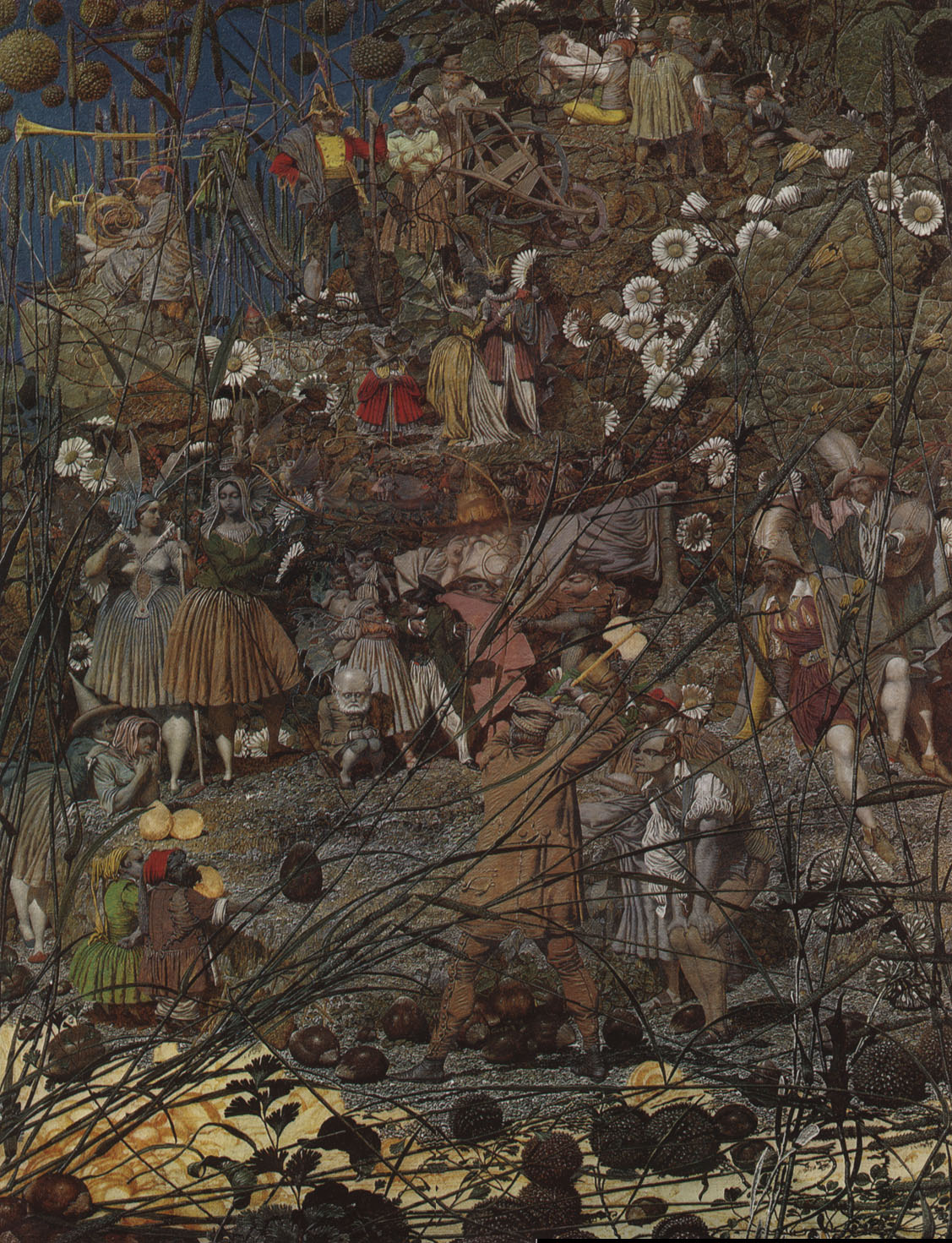Fairy
A fairy is a type of mythical being or legendary creature, generally described as anthropomorphic, found in the folklore of multiple European cultures, a form of spirit, often with metaphysical, supernatural, or preternatural qualities.
The label of "fairy" has at times applied only to specific magical creatures with human appearance, magical powers, and a penchant for trickery. At other times it has been used to describe any magical creature, such as gnomes or a kobold, which is a type of gremlin. Fairy has at times been used as an adjective, with a meaning equivalent to "enchanted" or "magical." It is also used as a name for the place these beings come from, the land of Fairy.
Etymology and name
The English fairy derives from the Early Modern English faerie, meaning "realm of the fays." Faerie, in turn, derives from the Old French form faierie, a derivation from faie (from Vulgar Latin fata, "the fates").
In Old French romance, a faie or fee was a woman skilled in magic, and who knew the power and virtue of words, of stones, and of herbs.
Various folklore traditions refer to fairies euphemistically as wee folk, good folk, people of peace, fair folk (Welsh: Tylwyth Teg). Alternate spellings include: fay, fae, fey, or faerie.
Description
Fairies are generally described as human in appearance and having magical powers. Diminutive fairies of various kinds have been reported through centuries, ranging from quite tiny to the size of a human. These small sizes could be magically assumed, rather than constant. Some smaller fairies could expand their figures to imitate humans.
On Orkney, fairies were described as short in stature, dressed in dark grey, and sometimes seen in armour. In some folklore, fairies have green eyes. Some depictions of fairies show them with footwear, others as barefoot. Wings, while common in Victorian and later artworks, are rare in folklore; fairies flew by means of magic, sometimes perched on ragwort stems or the backs of birds. Modern illustrations often include dragonfly or butterfly wings.
Protection
Much folklore of fairies involves methods of protecting oneself from their malice, by means such as cold iron, charms of rowan trees or various herbs, or simply shunning locations "known" to be theirs, ergo avoiding offending any fairies. Less harmful pranks ascribed to fairies include: tangling the hair of sleepers into fairy-locks (aka elf-locks), stealing small items, and leading a traveler astray. More dangerous behaviors were also attributed to fairies and any form of sudden death might have stemmed from a fairy kidnapping.
Before going out into a fairy-haunted place, it was customary to put a piece of dry bread in one's pocket. In County Wexford, Ireland, in 1882, it was reported that: "if an infant is carried out after dark a piece of bread is wrapped in its bib or dress, and this protects it from any witchcraft or evil."
Bells also have an ambiguous role; while they protect against fairies, the fairies riding on horseback — such as the fairy queen — often have bells on their harness.
While many fairies will confuse travelers on the path, the will-o'-the-wisp can be avoided by not following it.
Origins
Early modern fairies does not derive from a single origin; the term is a conflation of disparate elements from folk belief sources, influenced by literature and speculation. In folklore of Ireland, the mythic aes sídhe, or 'people of the fairy hills', have come to a modern meaning somewhat inclusive of fairies. The Scandinavian elves also served as an influence.
The folkloristic or mythological elements combine Celtic, Germanic and Greco-Roman elements. Folklorists have suggested that 'fairies' arose from various earlier beliefs, which lost currency with the advent of Christianity. These disparate explanations are not necessarily incompatible, as 'fairies' may be traced to multiple sources.
Folklorists and mythologists have variously depicted fairies as:
- the unworthy dead
- the children of Eve
- a kind of demon
- a species independent of humans
- an older race of humans
- fallen angels
As demonic entities
Most Christians have been negative or skeptical regarding creatures such as fairies or nature spirits, but a minority of Christian thinkers have advocated for the reality of fairies in positive terms. King James I, in his dissertation Daemonologie, stated the term "faries" referred to illusory spirits that prophesied to, consorted with, and transported the individuals they served, somewhat like a familiar; in medieval times, a witch or sorcerer who had a pact with a familiar spirit might receive these services.
The perspective of fairies as demons grew more popular with the rise of Puritanism among the Reformed Church of England. Dealing with fairies was considered a form of witchcraft, and punished as such.
At one time it was thought that fairies were originally worshiped as deities, such as nymphs and tree spirits, and with the burgeoning predominance of the Christian Church, reverence for these deities carried on, but in a dwindling state of perceived power.
In popular culture
The Victorian era was particularly noted for fairy paintings. The Victorian painter Richard Dadd created paintings of fairy-folk with a sinister and malign tone. Interest in fairy-themed art enjoyed a brief renaissance following the publication of the Cottingley Fairies photographs in 1920, these were a series of five photographs purporting to show two girls in the presence of actual fairy creatures. However, they were later proven to be faked.
Edmund Spenser featured fairies in his 1590 book The Faerie Queene.
Fairies appear as significant characters in William Shakespeare's A Midsummer Night's Dream, which is set simultaneously in the woodland and in the realm of Fairyland.
The Fairy Feller's Master-Stroke (1864) is a painting by English artist Richard Dadd, who painted it while he was institutionalized.
Fairies are seen in Neverland, in Peter and Wendy, the 1911 novel version of J. M. Barrie's famous Peter Pan stories, and its character Tinker Bell has become a pop culture icon.
Singer Freddie Mercury of the British rock band Queen wrote several songs about fairies which take place in a fictional realm of Rhye. The most famous of these was Seven Seas of Rhye.
The Watchers is a 2024 supernatural horror film about a group of strangers trapped in a forest in Ireland. They are forced to remain in a fortified house due to the presence of shapeshifting fairies in the woods.

